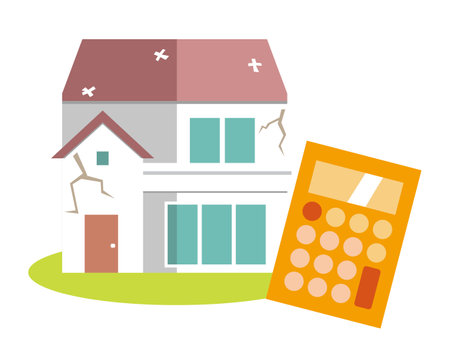Understanding the BRRRR Method
The BRRRR method is a popular real estate investment strategy that stands for Buy, Rehab, Rent, Refinance, Repeat. Its designed to help investors build long-term wealth by acquiring properties in a systematic way. Each step plays a key role in maximizing returns while minimizing the amount of upfront capital needed for future deals.
What Does BRRRR Stand For?
| Step | Description |
|---|---|
| Buy | Purchase a property below market value—typically one that needs some work. |
| Rehab | Renovate or repair the property to increase its value and rental appeal. |
| Rent | Lease the property to tenants to start generating monthly cash flow. |
| Refinance | Take out a new mortgage based on the updated property value to recover your initial investment. |
| Repeat | Use the funds from refinancing to buy another property and repeat the process. |
Why Investors Use the BRRRR Strategy
The BRRRR method is attractive because it allows investors to recycle their capital. Instead of tying up cash in one property, you can pull your money out through refinancing and use it again. This makes it possible to grow your portfolio faster without needing to save up for each new down payment.
Example Scenario:
Imagine buying a fixer-upper home for $100,000, spending $30,000 on renovations, and increasing its appraised value to $180,000. After renting it out, you refinance with a lender who gives you 75% of the new appraised value—$135,000. This pays back your original purchase and rehab costs and gives you money to invest in another property.
Key Benefits:
- Maximized ROI: By improving and refinancing properties, you boost equity and reduce initial capital tied up.
- Cash Flow: Rental income provides steady monthly earnings.
- Scalability: You can grow your portfolio without waiting years to save for each purchase.
The BRRRR method is especially useful in markets where affordable homes are available and demand for rentals is strong. If done correctly, its one of the most efficient ways to build wealth through real estate investing.
2. Finding the Right Property to Buy
The second step in the BRRRR method is finding a property that offers strong potential for equity growth and rental income after renovation. In the U.S. real estate market, this usually means looking for undervalued or distressed properties in neighborhoods that are either up-and-coming or have solid rental demand.
What Makes a Property a Good BRRRR Candidate?
When searching for your ideal investment property, consider the following key factors:
| Factor | Why It Matters |
|---|---|
| Below Market Value | You want to buy low so you can force appreciation through renovations and refinancing later. |
| Neighborhood Rental Demand | A strong rental market ensures you can rent out the property quickly after rehab. |
| Renovation Potential | Look for properties where improvements will significantly increase value and appeal. |
| Zoning and Regulations | Verify local codes allow for rental use and any upgrades youre planning. |
Where to Look for Properties
There are several ways to find BRRRR-appropriate properties in the U.S. Here are some common sources:
- MLS (Multiple Listing Service): Work with a real estate agent to access active listings in your target area.
- Foreclosures and Short Sales: These often sell below market value and may offer good upside potential.
- Off-Market Deals: Network with wholesalers, attend local real estate meetups, or send direct mail to owners of distressed properties.
- Online Platforms: Websites like Zillow, Redfin, Auction.com, and Craigslist can be useful tools for finding deals.
How to Analyze a Property’s Potential
Before making an offer, run the numbers carefully. A good BRRRR deal should make financial sense both during the rehab phase and as a long-term rental. Use this simple checklist:
BRRRR Deal Analysis Checklist:
- Purchase Price: Is it well below comparable sales in the area?
- Rehab Costs: Get contractor estimates or use per-square-foot averages for budgeting.
- After Repair Value (ARV): What will similar homes sell for once fixed up?
- Rent Potential: Does projected rent cover mortgage, taxes, insurance, and maintenance with positive cash flow?
- Exit Strategy: Will you be able to refinance at a higher valuation and pull out most or all of your initial investment?
Tip:
If youre new to investing, consider starting in a city with lower home prices but steady rental demand — places like Cleveland, Indianapolis, or Memphis are popular among BRRRR investors because they offer affordable entry points and decent returns.
The key is patience and due diligence. Take time to research markets, analyze deals carefully, and don’t rush into a property just because it looks cheap. The right property sets the foundation for success in every other step of the BRRRR process.
![]()
3. Rehabbing for Maximum Value
Once youve bought a property using the BRRRR method, the next step is rehabbing—or renovating—it to increase its value and rental appeal. This phase is crucial because smart renovations can significantly boost your return on investment (ROI) while making the property more attractive to potential tenants. Heres how to approach rehabbing with cost-efficiency, compliance, and tenant appeal in mind.
Focus on High-Impact, Budget-Friendly Upgrades
Not all renovations are created equal. Some upgrades offer better ROI than others, especially when youre working with a limited budget. Focus on improvements that will have the most impact on both appraisal value and tenant satisfaction.
Top Renovations with Strong ROI
| Improvement | Estimated Cost | ROI Potential | Why It Works |
|---|---|---|---|
| Kitchen Updates | $5,000–$15,000 | 70%–80% | Kitchens are a major selling point and attract quality tenants. |
| Bathroom Remodels | $3,000–$10,000 | 60%–75% | Modern bathrooms improve livability and appeal. |
| New Flooring (e.g., LVP) | $2–$5/sq ft | 60%+ | LVP is durable, affordable, and looks high-end. |
| Curb Appeal (landscaping, paint) | $1,000–$3,000 | 50%–75% | A good first impression helps reduce vacancy time. |
| Fresh Interior Paint | $1–$3/sq ft | 50%+ | A fresh coat makes the unit feel clean and new. |
Stick to Local Building Codes and Permits
No matter how small or large your rehab project is, it’s critical to follow local building codes. Not only does this keep your project legal—it also protects you from costly fines or delays down the road. Always check if permits are required for electrical, plumbing, HVAC work, or structural changes. Hiring licensed contractors can help ensure everything is up to code.
Create a Tenant-Friendly Design
Your goal is to attract long-term renters who will treat your property with care. To do that, design your rehab with their needs in mind:
- Select neutral colors: Light grays, whites, and soft taupes are versatile and appeal to most people.
- Add durable finishes: Choose materials like quartz countertops or luxury vinyl plank flooring that resist wear and tear.
- Include modern amenities: In-unit laundry, dishwashers, energy-efficient appliances—even smart thermostats—can set your unit apart from others in the area.
- Aim for low maintenance: Minimize ongoing costs by using long-lasting materials and fixtures that require less upkeep.
Avoid Over-Renovating
You’re not flipping a luxury home—you’re creating a solid rental asset. Don’t spend money on high-end finishes that won’t significantly raise rent or value in your market. Always compare renovation costs with potential rent increases or appraised value to ensure you’re spending wisely.
The 70% Rule (for ARV Planning)
This rule helps investors stay within budget during rehab:
Total Investment = (ARV x 70%) – Estimated Repair Costs
This ensures you leave enough room for profit after renovation and refinancing.
The Bottom Line on Rehabbing in the BRRRR Method
The rehab phase sets the stage for higher rents and better refinancing terms. By focusing on cost-effective upgrades that increase value and appeal—while staying compliant with local regulations—you’ll position yourself for success in the next stages of the BRRRR process: Rent and Refinance.
4. Renting It Out Strategically
Once your property is renovated and ready, the next step in the BRRRR method is to rent it out. This phase is crucial because renting it out strategically helps you generate consistent cash flow and ensures the long-term success of your investment. Heres how you can do it smartly in the U.S. real estate market.
Understand What Attracts Quality Tenants
Quality tenants pay on time, take care of the property, and follow lease agreements. To attract them, you need to offer a clean, safe, and updated living space in a desirable location. Here are some features that typically appeal to good tenants:
| Feature | Why It Matters |
|---|---|
| Modern Appliances | Tenants prefer homes with updated kitchens and energy-efficient appliances. |
| Safe Neighborhood | Good schools, low crime rates, and nearby amenities increase desirability. |
| Pet-Friendly Options | Allowing pets (with conditions) can expand your tenant pool significantly. |
| Online Rent Payment | Simplifies transactions and appeals to tech-savvy renters. |
Set Competitive Rent Prices
Pricing your rental correctly is key to reducing vacancy and maximizing returns. If rent is too high, it may sit empty; if its too low, youre leaving money on the table. Heres how to find the sweet spot:
Steps to Determine Rent Price:
- Research Comparable Listings: Check sites like Zillow, Rent.com, or Apartments.com for similar properties in your area.
- Factor in Property Condition: Newly renovated units can command higher rent than outdated ones.
- Consider Amenities: Parking, laundry facilities, and included utilities can justify premium pricing.
- Use Rent Calculators: Online tools help estimate fair market value based on location and features.
Comply With Landlord-Tenant Regulations
The U.S. has specific laws that protect both landlords and tenants. Complying with these rules not only avoids legal trouble but also builds trust with renters.
Key Areas to Understand:
- Fair Housing Laws: You cannot discriminate against tenants based on race, gender, religion, disability, or other protected classes under federal law.
- Security Deposits: Most states limit how much you can charge and require timely return after move-out.
- Maintenance Responsibilities: You must keep the property habitable by fixing major issues like plumbing or heating problems promptly.
- Notice Requirements: Laws vary by state but generally require advance notice before entering a unit or raising rent.
A good landlord-tenant relationship starts with clear communication and mutual respect. By understanding what tenants want, pricing fairly, and following local laws, youll set yourself up for long-term success as a real estate investor using the BRRRR strategy.
5. Refinancing to Scale Your Portfolio
Once your property is fully renovated and generating rental income, it’s time to move on to the next step in the BRRRR method: refinancing. This is where you unlock the power of your investment by pulling out your initial capital, allowing you to repeat the process and grow your real estate portfolio.
What Is a Cash-Out Refinance?
A cash-out refinance lets you replace your original mortgage with a new one that has a higher loan amount. The difference between the two loans is paid to you in cash, which you can then use for another investment property.
Example:
| Item | Amount |
|---|---|
| After-Repair Value (ARV) | $200,000 |
| Loan-to-Value (LTV) Ratio (typically 75%) | $150,000 |
| Total Investment (purchase + rehab) | $100,000 |
| Cash Out After Refinance | $50,000 |
In this scenario, you recover your full $100,000 investment through the new loan and still have $50,000 available to put into another property.
Why Refinancing Matters in BRRRR
The goal of refinancing isn’t just to take cash out — it’s about freeing up capital so you can reinvest. When done right, you’re recycling your money and increasing your assets without needing new capital each time. It’s like hitting the reset button on your investment funds while keeping ownership of appreciating rental properties.
Benefits of Refinancing:
- Recover Initial Investment: Pull out the money you used for purchase and rehab.
- Create Liquidity: Use the cash for down payments on future deals.
- Build Equity Over Time: Keep tenants paying down your mortgage while your property appreciates.
- Scale Faster: Grow your portfolio without needing large amounts of new capital.
Lender Requirements to Keep in Mind
Lenders typically require these before approving a cash-out refinance:
- Seasoning Period: You may need to own the property for 6 months or more.
- Sufficient ARV: The after-repair value must support the new loan amount.
- Good Credit Score: Better credit means better rates and terms.
- Stable Rental Income: Lenders want assurance that the property generates enough income to cover expenses.
The Key to Repeating the Process
The whole point of refinancing in the BRRRR strategy is so you can repeat it. Once youve refinanced successfully and pulled out equity, youre ready to go back to step one — Buy another property, Rehab it, Rent it out, Refinance again… and Repeat. Each cycle brings you closer to financial freedom through growing passive income and long-term wealth.
6. Avoiding Common Pitfalls and Managing Risk
The BRRRR method—Buy, Rehab, Rent, Refinance, Repeat—is a powerful strategy for building wealth through real estate investing. However, like any investment approach, it comes with risks. By understanding common pitfalls and learning how to manage them, you can protect your investment and scale your portfolio more effectively.
Common Mistakes Investors Make
Many investors jump into BRRRR without fully understanding the process or preparing for potential challenges. Here are some typical mistakes:
| Mistake | Description | How to Avoid It |
|---|---|---|
| Overpaying for Properties | Buying at too high of a price leaves no room for equity after rehab. | Use accurate ARV (After Repair Value) estimates and stick to the 70% rule. |
| Underestimating Rehab Costs | Unexpected repairs can eat into profits or delay refinancing. | Hire a professional inspector and get multiple contractor bids before purchase. |
| Poor Tenant Screening | Bad tenants can cause property damage or stop paying rent. | Run background checks, verify income, and call references. |
| Inefficient Property Management | Lack of systems leads to maintenance issues and tenant dissatisfaction. | Use property management software or hire a reliable property manager. |
| Refinancing Delays | Delays in refinancing can tie up capital and prevent scaling. | Work with lenders familiar with BRRRR and start the refi process early. |
Managing Financial Risk
Avoiding financial trouble starts with careful planning. Here are some tips to help reduce risk:
- Create a detailed budget: Include purchase price, rehab costs, holding costs, and expected rental income.
- Build cash reserves: Set aside funds for unexpected expenses like emergency repairs or tenant turnover.
- Understand your financing: Know the terms of both your initial loan and refinance options to avoid surprises.
- Avoid overleveraging: Don’t take on too much debt too quickly—leave room for flexibility in your finances.
Operational Risk Management Tips
Smooth operations are key to scaling successfully. Consider these best practices:
- Create standard procedures: Have checklists for acquisitions, rehabs, tenant onboarding, and maintenance requests.
- Vet your team: Work with trustworthy contractors, agents, lenders, and property managers who understand investment properties.
- Track performance metrics: Use tools to monitor occupancy rates, cash flow, ROI, and repair timelines.
Quick Checklist: Are You Ready to Scale?
| Item | Status (Yes/No) |
|---|---|
| Sufficient Cash Reserves | |
| Reliable Team in Place | |
| Refinancing Lender Confirmed | |
| Clear Rehab & Rent Strategy | |
| Property Management System Ready |
Avoiding common mistakes and managing both financial and operational risks will help you build a solid foundation for long-term success with the BRRRR method. As you grow your portfolio, staying disciplined and informed will be key to building wealth through real estate investing.


